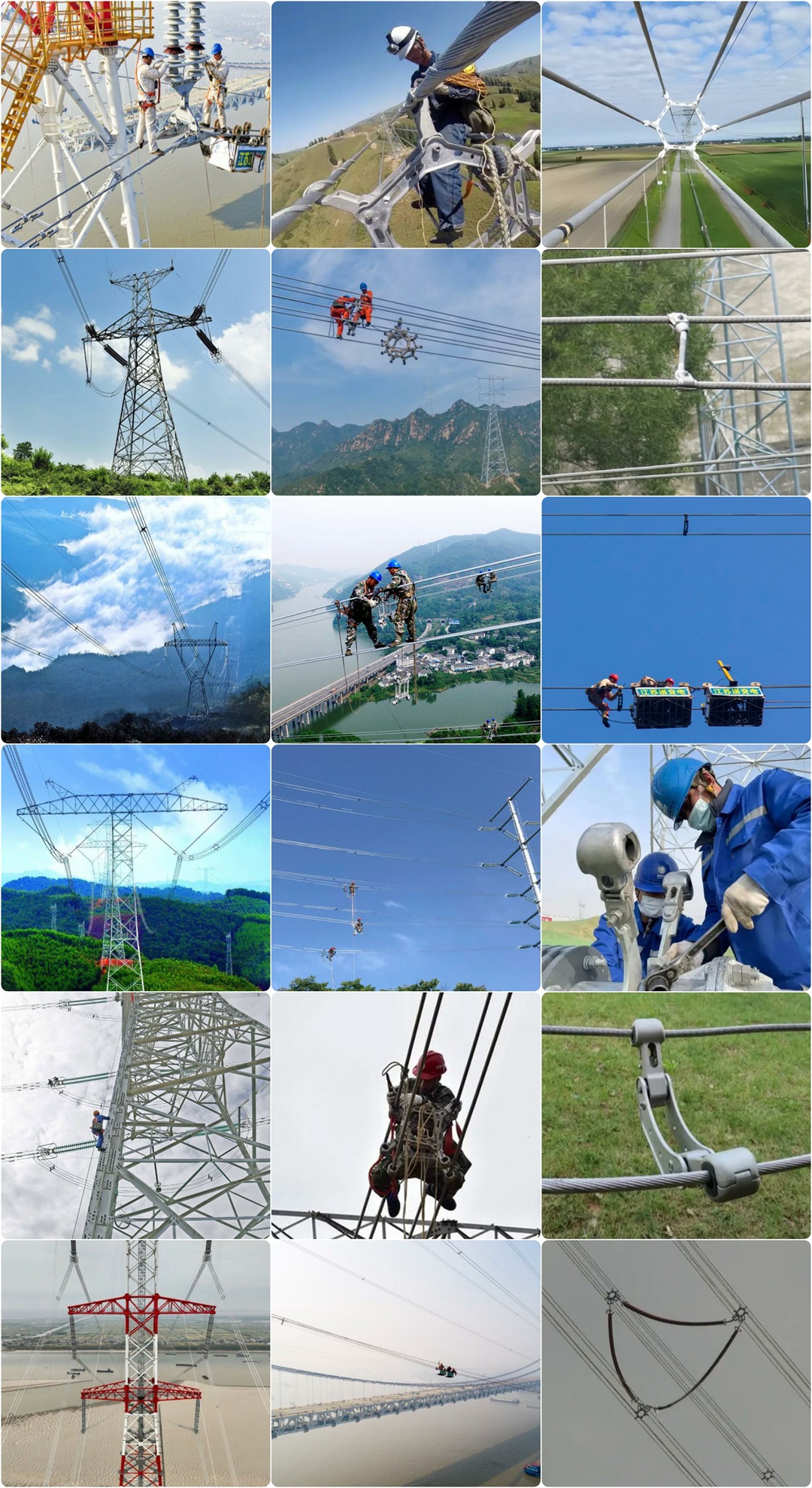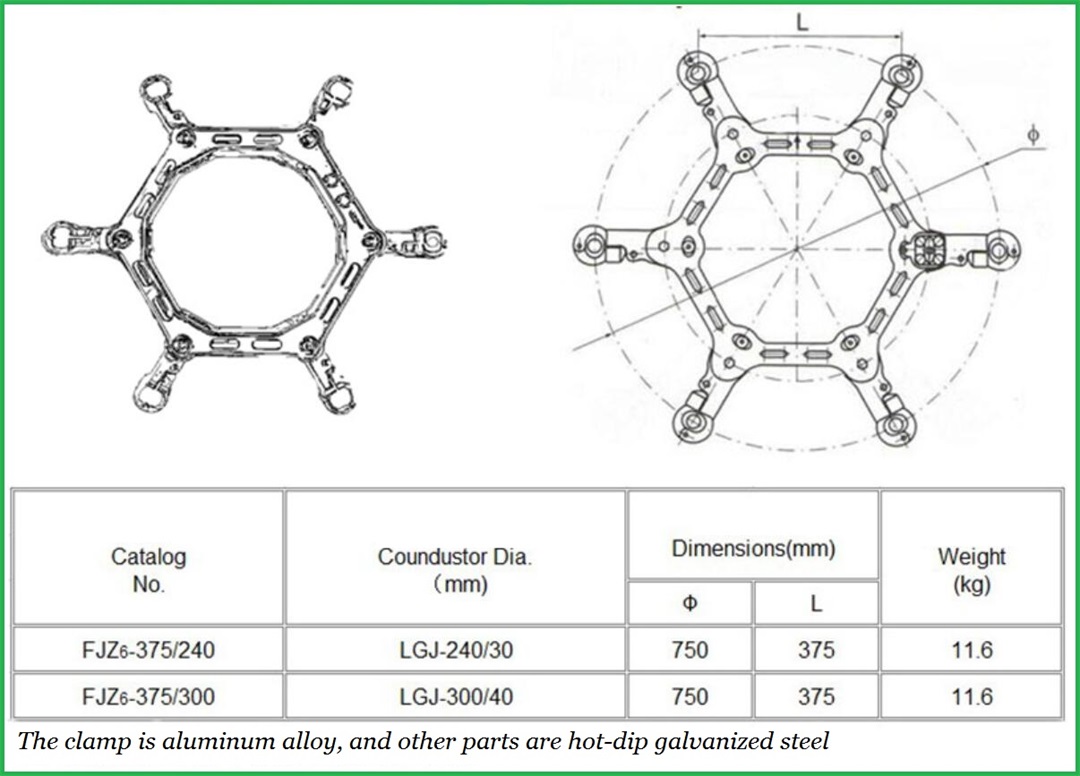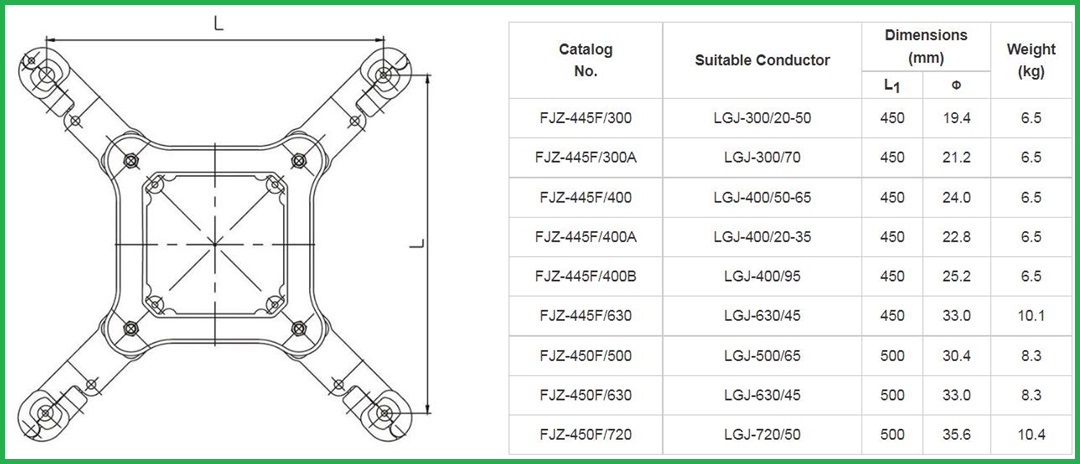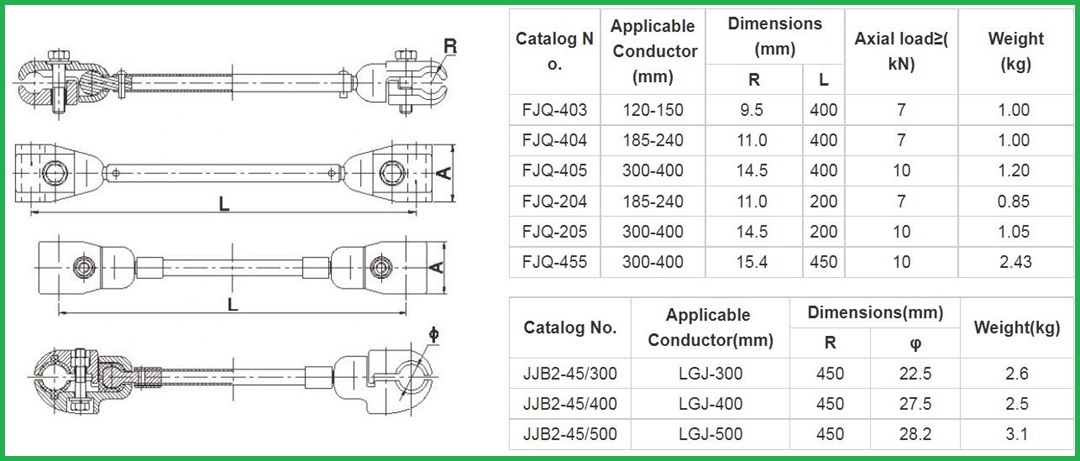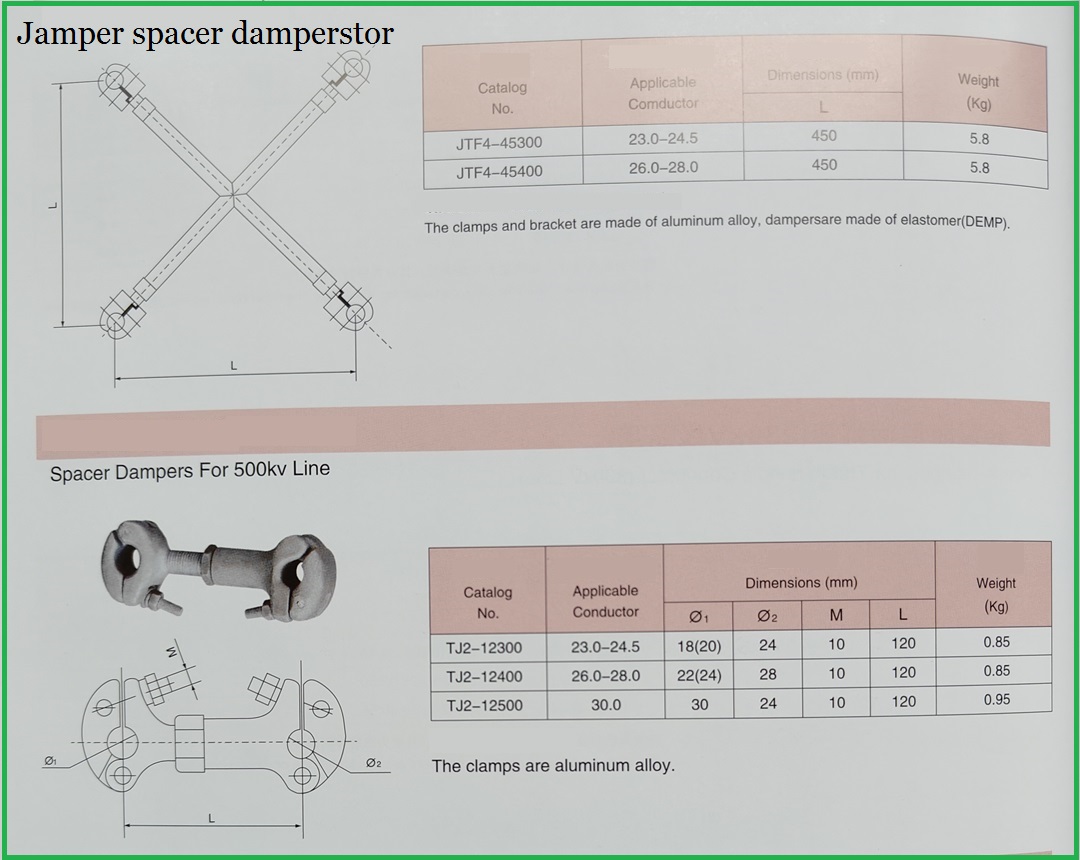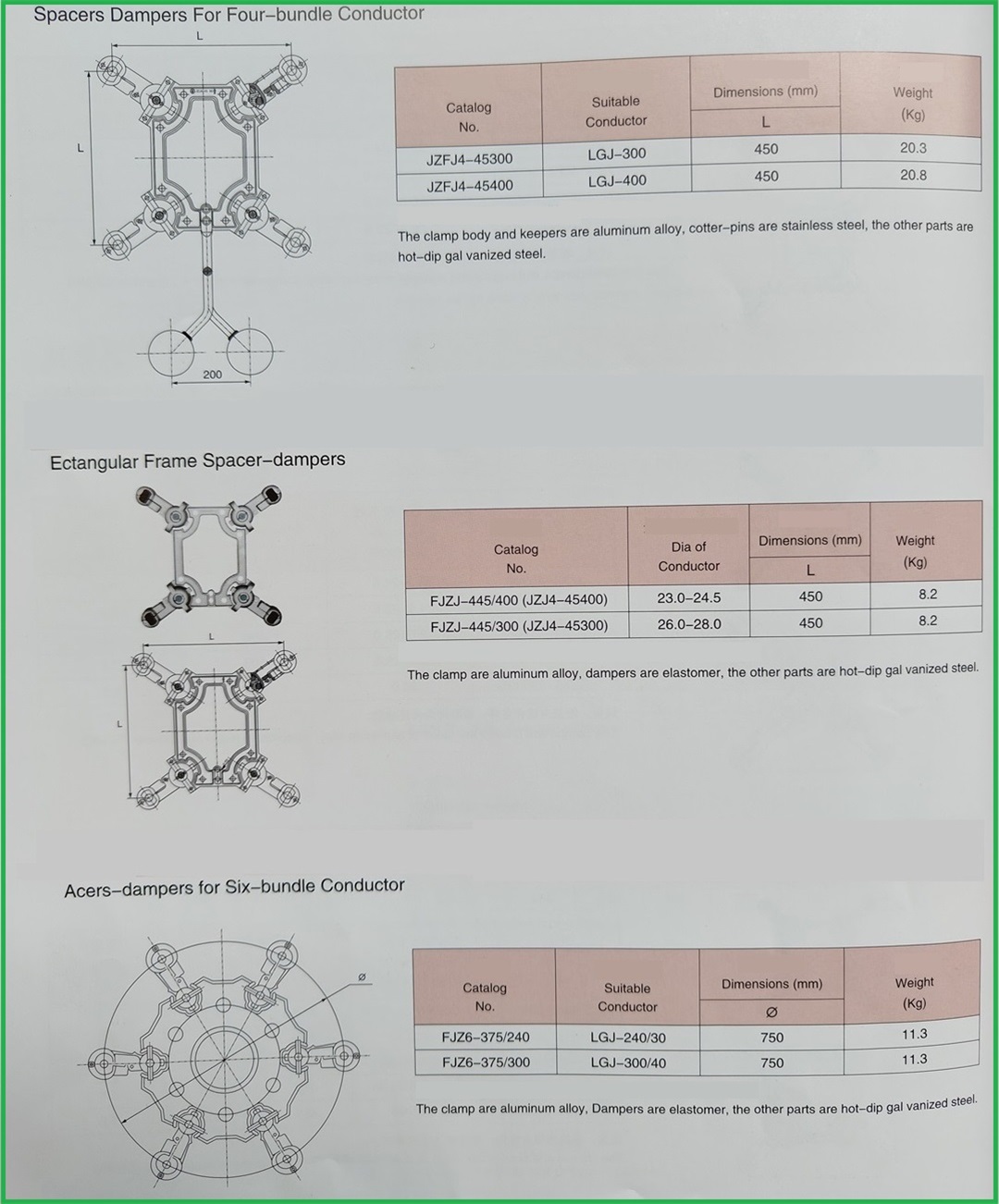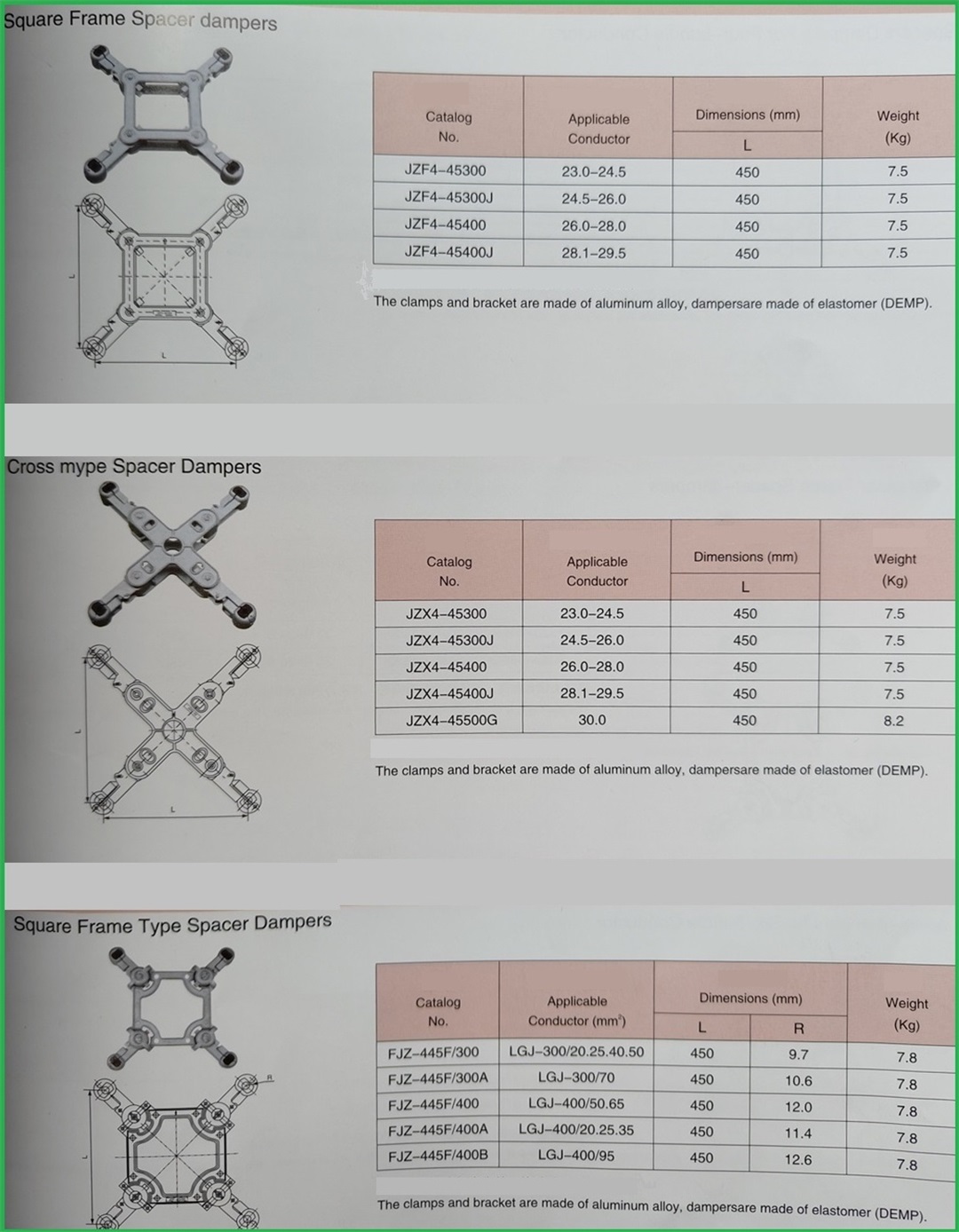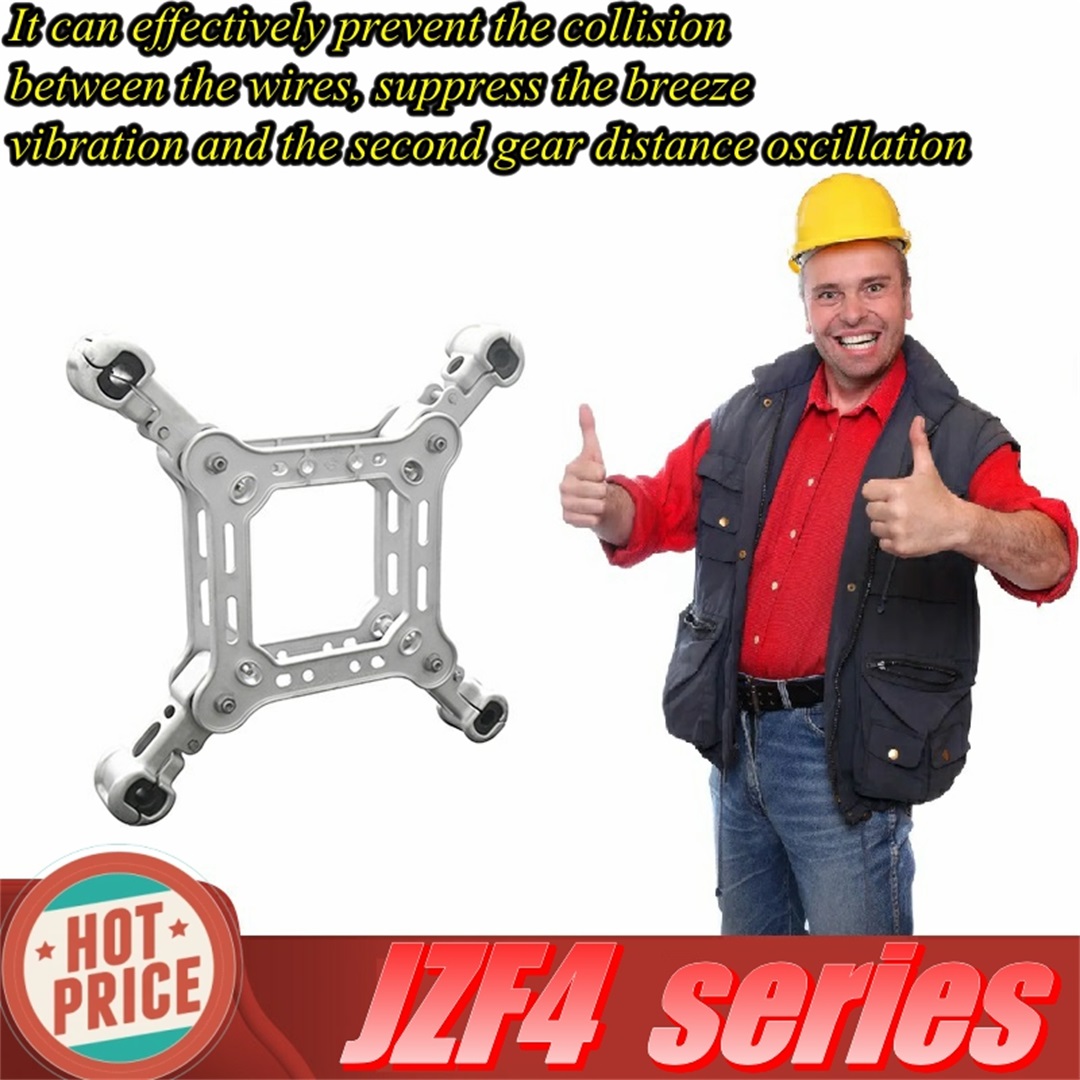JZF4/FJQ series 23-400mm² 330KV and above Electric Power fitting Spacer dampers for anti jumper of overhead line
Product Description
As an important part of electric power fittings, the use of spacer rods is frequently used in the transmission lines of China's power grid, and its production demand is also increasing. In order to prevent the whipping between the wires and reduce the vibration of the wires caused by the breeze, the role of the spacer between the wires is very important, similar to the effect of the anti-vibration hammer, but the main function of the spacer is to suppress the vibration between the spans .
The spacer rod refers to the fittings installed on the split wires to fix the distance between the split wires, so as to prevent the wires from whipping each other, suppress the breeze vibration and the sub-gap vibration. The spacer is generally installed in the middle of the span, and one is installed at an interval of 50-60m. Two-split, four-split, six-split, and eight-split wire spacer rods, compared with the vibration amplitude of the split wire after installing the spacer rod and without the spacer rod, the two-split wire is reduced by 50%, and the four-split wire is reduced by 87% and 90%.
The main requirement for the spacer is that the clamp must have sufficient grip and must not loosen during long-term operation, and the overall strength must be able to withstand the centripetal force of each split wire when the line is short-circuited and fatigue under long-term vibration. The spacer can be divided into two categories: damping and rigidity in terms of performance. The damping spacer is embedded with a wear-resistant rubber pad in its moving parts, and uses the damping of the rubber pad to consume the vibration energy of the conductor, thereby producing a damping effect on the vibration of the conductor. . Rigid spacers without such rubber pads are generally used in areas where vibration is not easy to occur or for jumper spacers due to poor vibration absorption performance.
The damping spacer is a flexible or semi-rigid spacer that can reduce the breeze vibration or sub-gap vibration of the split conductor. my country's 500kV transmission line adopts a four-split conductor structure. The spacer is the main fitting in the split wire structure. The basic tasks of the spacer are: to prevent the whipping between the wires, to suppress the vibration of the breeze and the vibration of the sub-gap. The most used is the damping spacer, which has better vibration absorption performance than the rigid spacer. Therefore, quantitative testing of the damping spacer's vibration-absorbing performance has become the key to research, design, manufacturing and selection of the damping spacer.
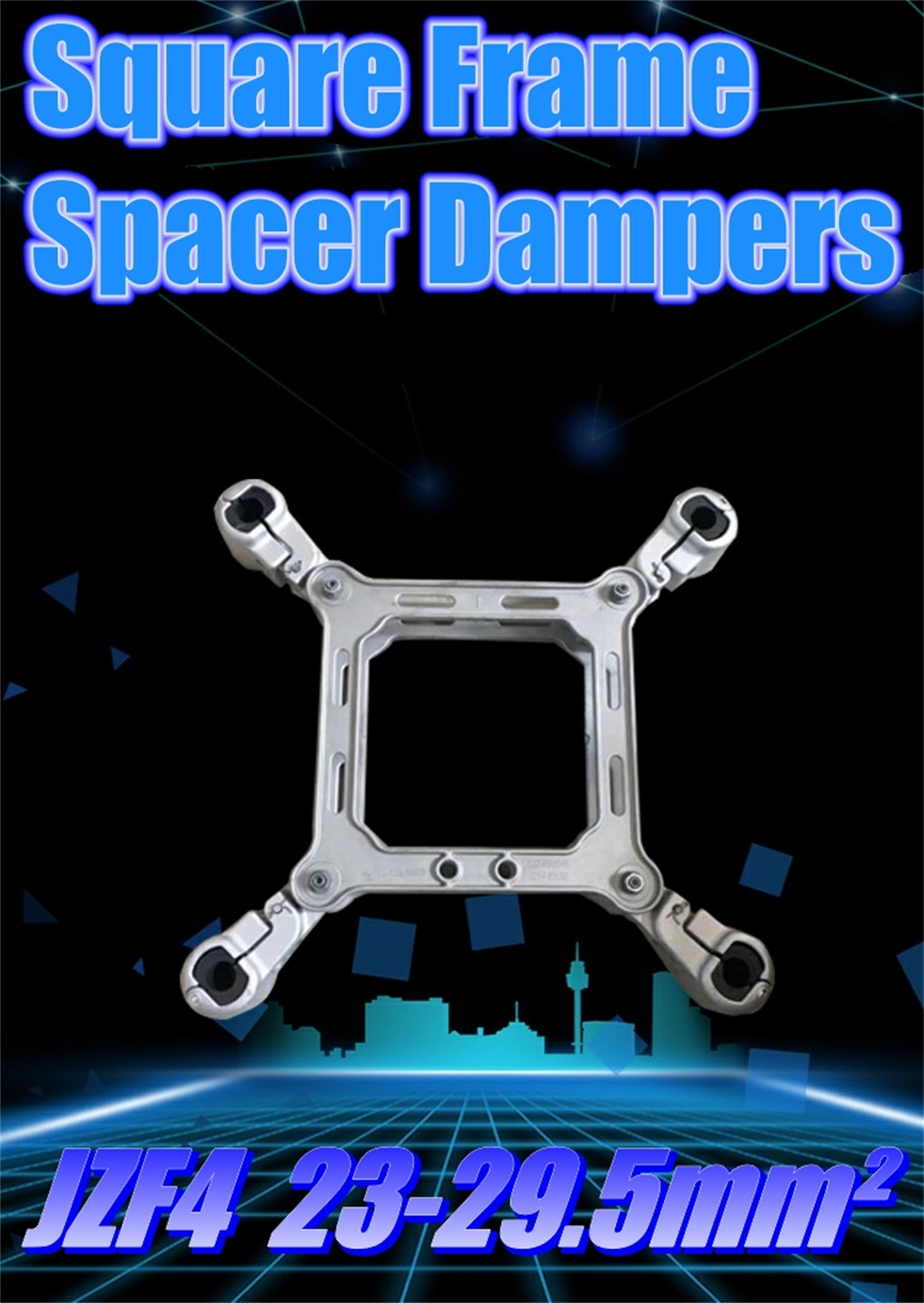
Product features and advantage
1. Damping spacer and non-damping spacer. The characteristic of the damping type spacer is that rubber is used as the damping material at the movable joint of the spacer to consume the vibration energy of the wire and produce a damping effect on the vibration of the wire. Therefore, this type of spacer is suitable for all regions. However, considering the economy of power transmission lines, this type of spacer is mainly used for lines in areas where conductors are prone to vibration. The non-damping spacer has poor shock absorption and can be applied to lines in areas where vibration is not easy to occur or used as a jumper spacer.
2. Two, four or more split conductors are used for each phase conductor of long-distance and large-capacity EHV transmission lines. At present, 220KV and 330KV transmission lines use two-split conductors, 500KV transmission lines use three-split and four-split conductors, and ultra-high voltage transmission lines with voltages higher than 500KV use six-split and more split conductors. In order to ensure that the distance between the split wire harnesses remains unchanged to meet the electrical performance, reduce the surface potential gradient, and in the case of a short circuit, the electromagnetic force will not be generated between the wire harnesses, causing mutual attraction and collision, or even if the instantaneous attraction collision is caused, but after the accident is eliminated Promptly can return to normal state, thereby spacer rods are installed at a certain distance in the span. The installation of spacer rods can also play a certain role in restraining the vibration of the secondary span and the vibration of the breeze.
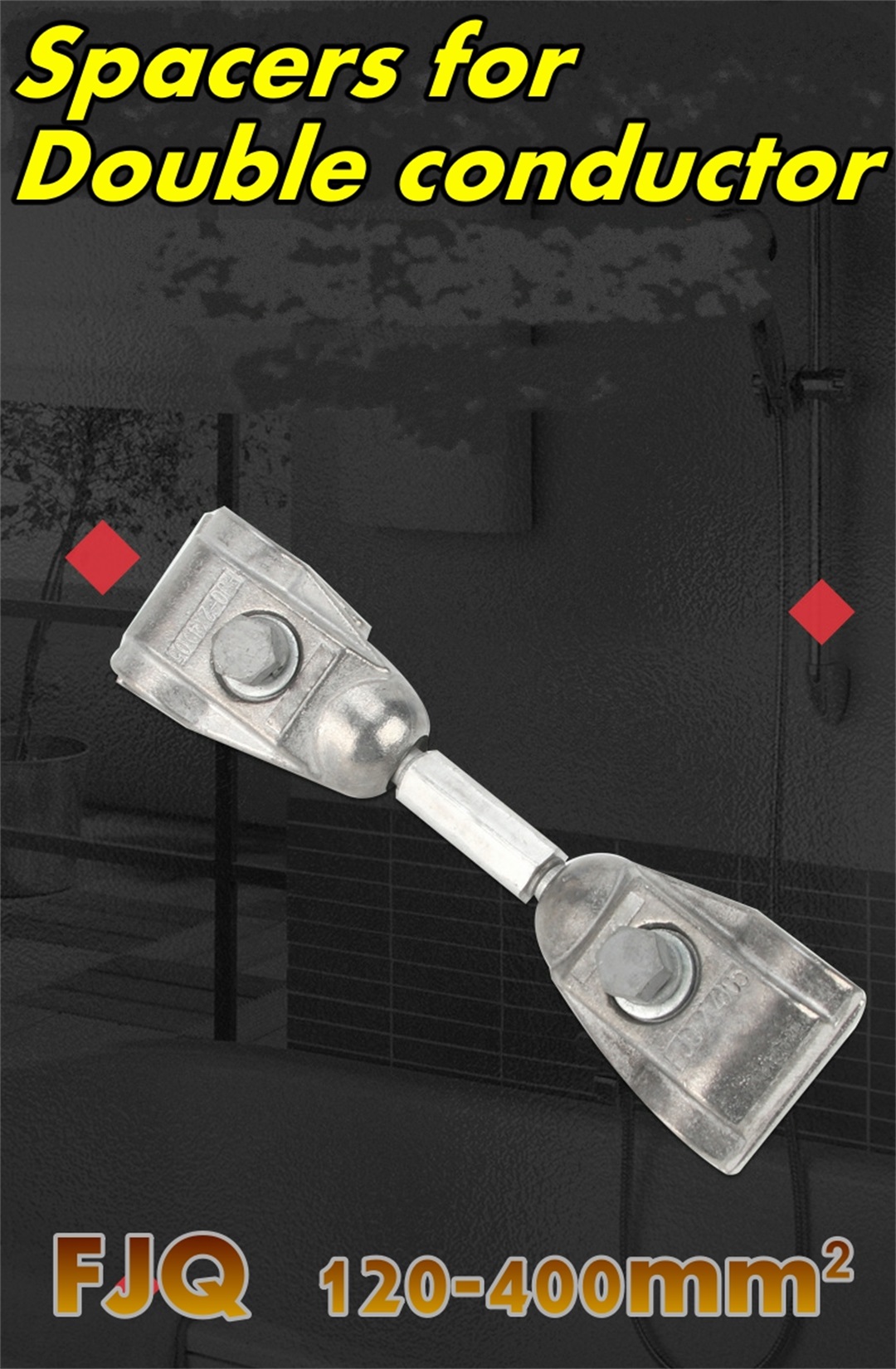
Product principle
The working principle of the damping spacer:
the vibration of the wire caused by the breeze and the vibration of the sub-gap induced by the strong wind will cause the fatigue of the wire, and the looseness of the fastener will cause the wire to wear. Split wires use spacers for stable electromechanical performance. The damping spacer is to use the elasticity of the rubber element to obtain the required rigidity so that it can have sufficient mobility while maintaining the geometric dimensions of the split wire. Utilize the viscosity of rubber to absorb enough energy under alternating stress to achieve the purpose of suppressing wind vibration.
The damping performance of the damping spacer is related to the damping coefficient of the rubber element material. However, the damping effect of the rubber element is more closely related to the structure and use status of the spacer. The damping performance is a key parameter for researching and designing damping spacers. The vibration absorption characteristics and durability of various types of damping spacers can be estimated and compared by testing their stiffness and energy consumption.
The testing principle
of the damping spacer: A support wire support of the damping spacer is connected with the slider of the simulated vibration table to form a rocker slider mechanism, and the vibration of the slider is used to simulate the working state of the damping spacer on the overhead wire. Test the loop line of the damping spacer rod on the overhead wire to support the amplitude of the support line changing with the external force. The area enclosed by this loop line is the weekly energy loss. The average stiffness is calculated from the maximum external force and amplitude.
The anti-dancing mechanism of the clamp rotary spacer:
the ice coating of single wire and split wire is very different. The axis of the transmission line is generally eccentrically iced and facing the windward side. After the conductor is coated with ice, the mass imbalance will twist around its own axis. The cross-sectional shape of the iced conductor becomes uniform during the process of continuous twisting and ice coating. It has the effect of suppressing the galloping of the wire. The split conductors have spacers at intervals to fix the sub-conductors, so that the sub-conductors cannot rotate accordingly near the spacer rods. At the same time, due to the fixed connection, the torsional rigidity of the shorter sub-gauge conductor is increased. The sub-conductor of the sub-gap requires a larger static torque to be reversed, and it is difficult for the conductor to rotate around its own axis. The torsion coefficient of the split wire is much larger than that of the single wire, and the uneven icing is more serious, so the split wire is more likely to gallop than the single wire.
The dancing defense principle of the wire clamp rotary spacer: the rotatable wire clamp is the key to defending against dancing. When the sub-conductors are fixed with spacers, half of the sub-conductors can rotate within a certain range. Even in the case of icing, the conductors can also use the ice-coated and snow-covered eccentric mass to twist, and form by twisting around their own axes Evenly round with icing. So as to achieve the purpose of suppressing the ice-coated galloping of the wire.
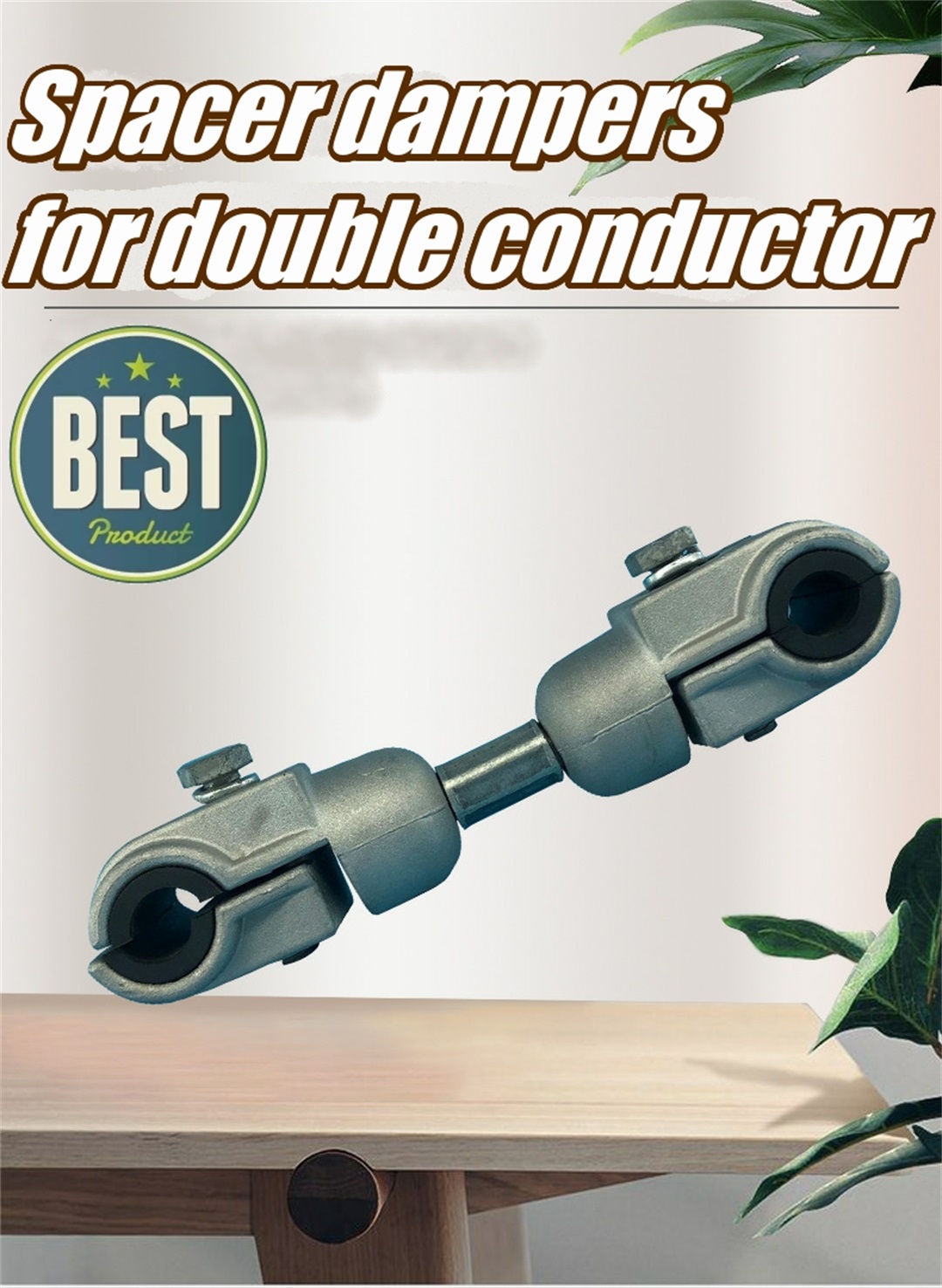
Product details

Products real shot
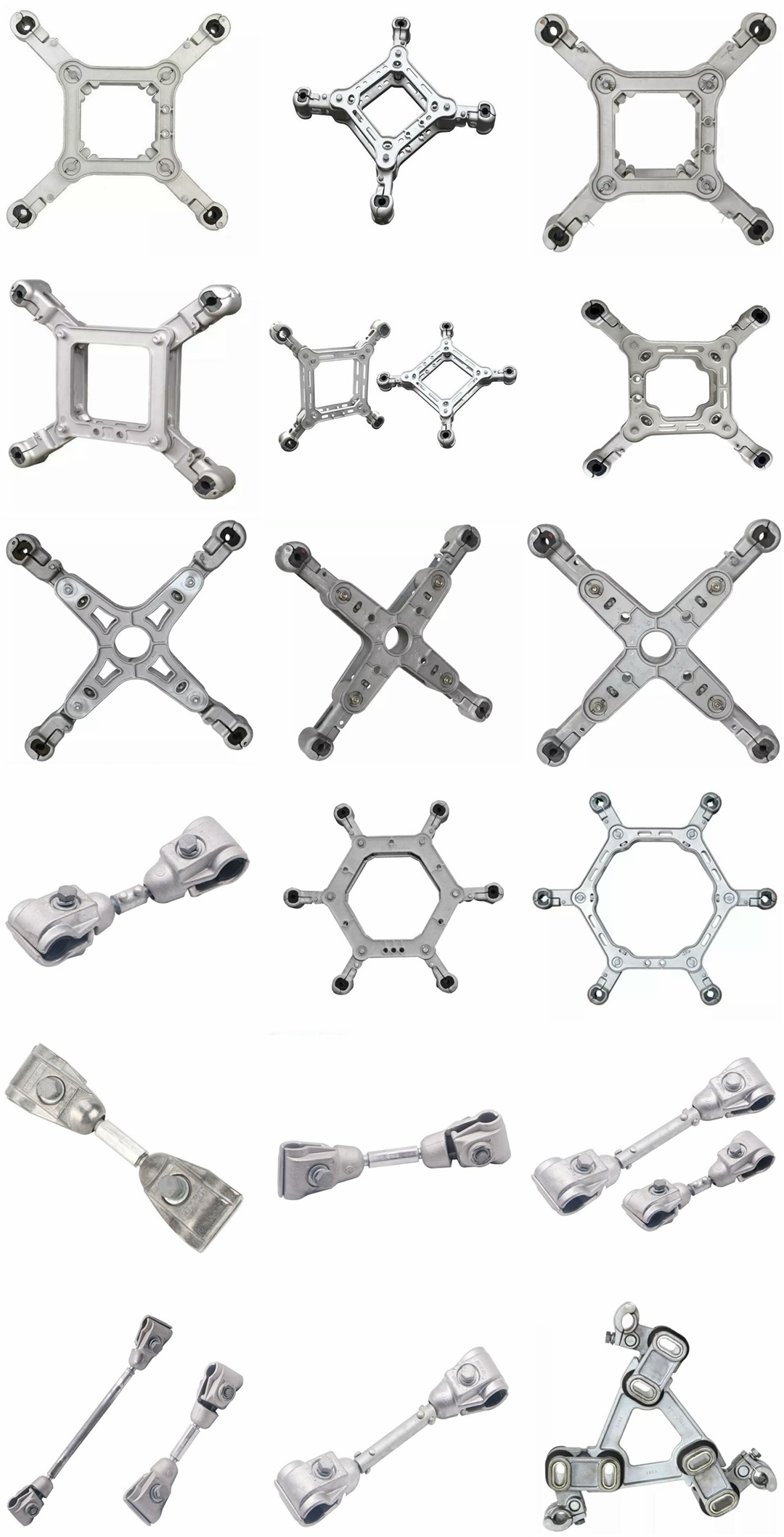
A corner of the production workshop
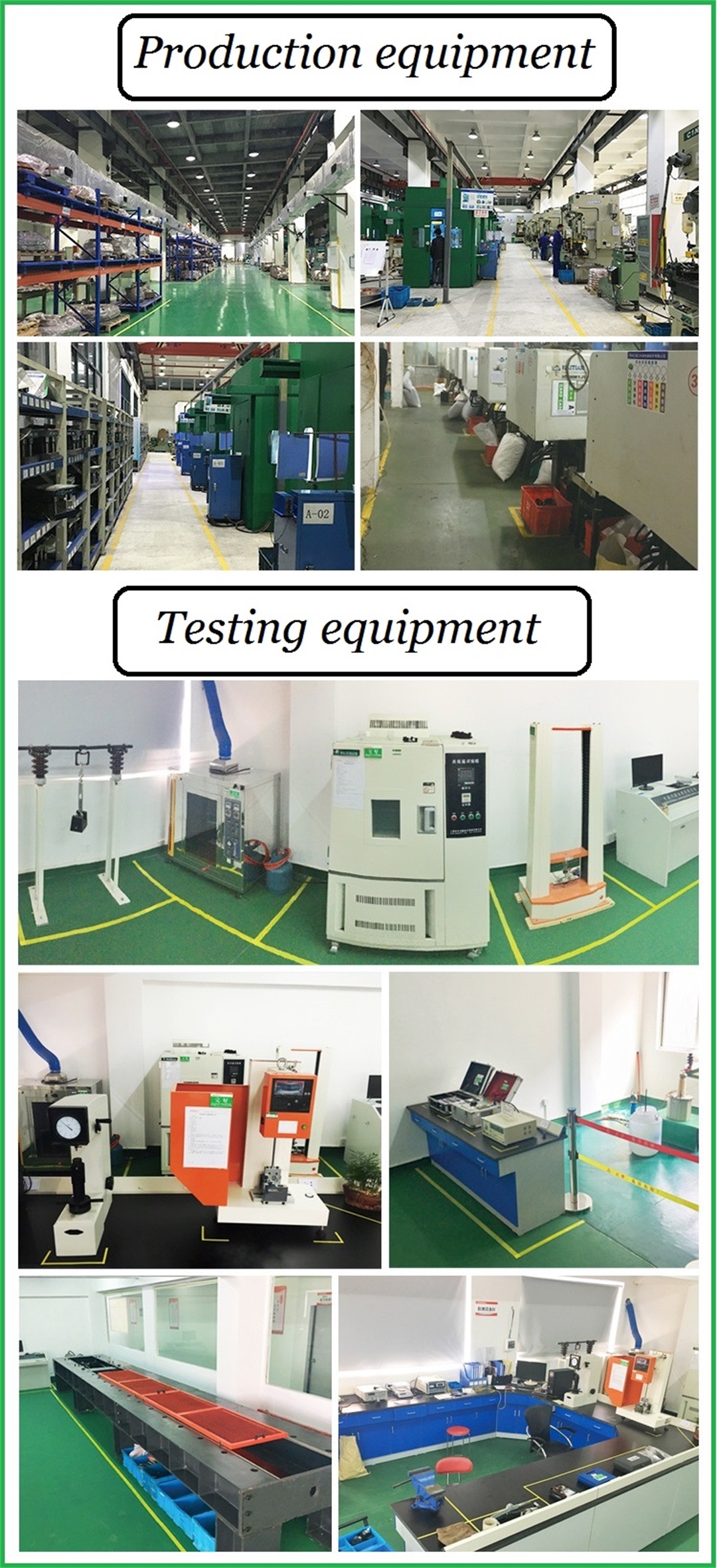
Product packaging
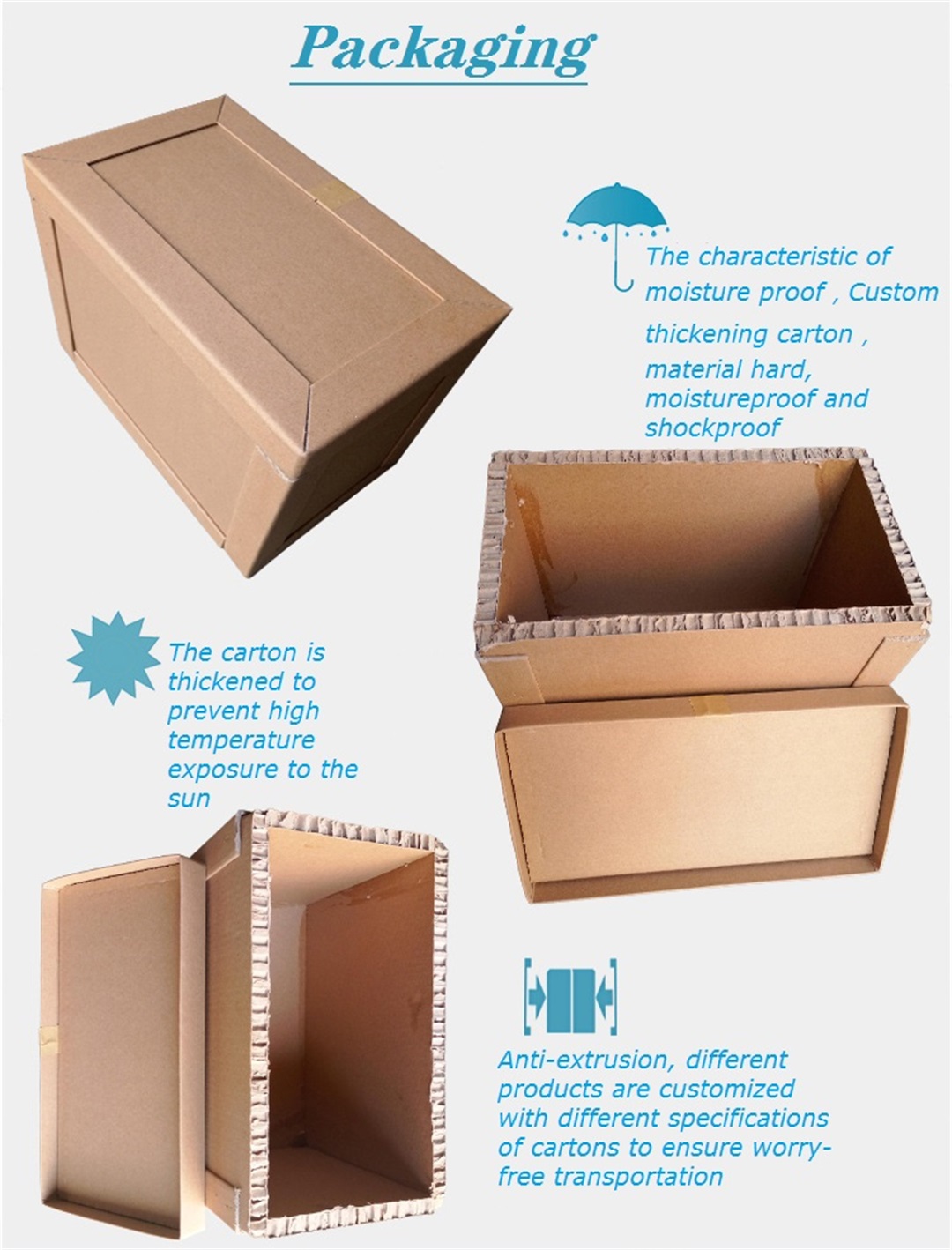
Product application case
